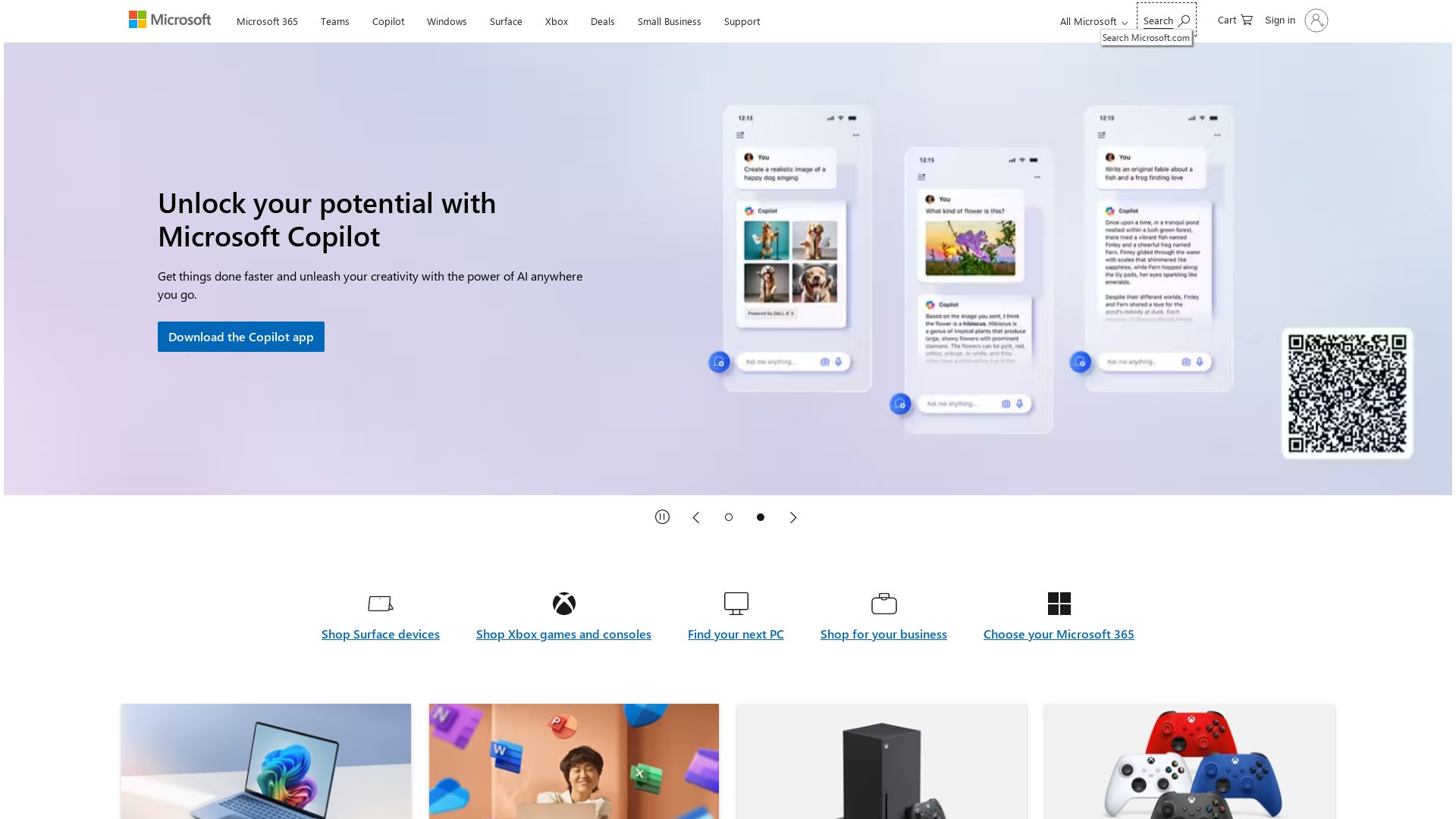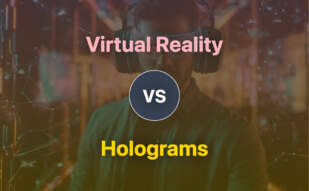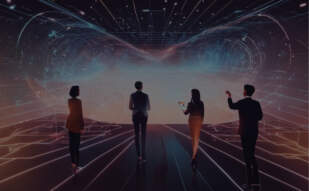Holograms have a rich history, with the term derived from Greek words meaning ‘whole message’. The development of holography saw significant breakthroughs, from the invention of lasers in 1960 to the pioneering work at the University of Michigan. Holograms find applications in various fields from communication to healthcare and advertising.

For those exploring alternatives to Holograms, options include 3D, Augmented Reality, Virtual Reality, Mixed Reality, Simulation, Digital Twin, Metaverse, and Artificial Intelligence.
3D
Invented by Sketchpad creator, Ivan Sutherland, in the 1960s, 3D modeling has skyrocketed to incredible heights today. Thanks to specialized computer software, 3D models can be interacted with on-screen, rotated, flipped, exploded, and more, bridging the gap between virtual and physical reality.
3D Top Features
- Accurate planning: 3D modeling allows exact, error-free planning
- Real-world visualization: It provides a tangible, real-world look at designs ensuring clarity and precision.
- Boosted design speed: 3D modeling accelerates the design process, saving valuable time.
| Software Evolution | Started with Sketchpad in 1963, CAD systems in the 1960s, and 2D system AutoCAD in 1983. 3D took off in the 1990s with programs like Autodesk 3ds Max, Cinema 4D, Houdini, V-Ray, Blender, and Autodesk Maya. |
| Various Applications | Used in architecture, consumer products, education and combined with 3D printing to build prototypes, toys, household items, and creative designs. |
3D Limitations
- Computational demands: Solid 3D models are the most computationally demanding, requiring significant computing power.
- Expertise required: Creating 3D models may require specialized knowledge and software proficiency.
3D Use Cases
Use case 1
Architecture: 3D modeling drastically improves architectural design and visualization, giving clients a realistic image of their future building.
Use case 2
Education: In teaching, 3D models can bring complex concepts to life, enhancing learners’ understanding and engagement.
Use case 3
Consumer products: Designing consumer products becomes more precise and efficient, significantly reducing the error margin, with 3D modeling.
Augmented Reality
Augmented Reality (AR) enhances the physical world with data overlays. Pioneered by Harvard scientist Ivan Sutherland in 1968, it has become a groundbreaking technology in the digital world, working through mobile devices or AR glasses. It’s utilized in numerous sectors such as retail, gaming, and entertainment.
Top AR Features
- Real-time Interaction: AR empowers users to interact with both the digital and physical world.
- Unique Value: AR offers unique values surpassing other technologies, making it stand out.
- Accurate 3D Recognition: AR excels in accurate 3D recognition of real and virtual objects.
- Immersive Experience: Through AR glasses or camera lenses, users get an immersive experience.
- Use of AI and AR software: Advanced lenses and sensors combined with AI, make AR more powerful.
| AR Types | Description |
|---|---|
| Marker-based AR | Uses image recognition for interaction. |
| Marker-less AR | Identifies objects in view for augmentation. |
| Superimposition-based AR | Completely or partially replaces an object with an augmented view. |
AR Limitations
- Limited by the processing capabilities of the devices used.
- Increased consumption of device power due to extensive tracking and processing.
- The necessity for advanced cameras and sensors for accurate AR.
AR Use Cases
Use case 1: Retail
AR technology allows virtual “try-on” for customers, boosting the retail shopping experience. It is developing rapidly within the commercial world, particularly with makeup companies and fashion retailers.
Use case 2: Events
AR technology enhances customer engagement at events by providing interactive digital products and displays.
Use case 3: Culture & Tourism
AR is transforming the way we explore the cultural, historical, and geographic aspects of environments, providing immersive, educational experiences. It holds massive potential for future support in cultural institutions.
Virtual Reality
From its 19th century roots to the pioneering works of Morton Heilig and Ivan Sutherland, Virtual Reality (VR) has now become a formidable force in the digital realm. The revolution accelerated in 2014, when Facebook bought Oculus VR. From sensory stimulation to artificial reality experiences, VR’s journey is intensely immersive.
Virtual Reality Top Features
- Immersive Environment: The VR experience offers an immersive environment, making you feel part of the digital world.
- Multisensory Stimulation: VR can provide multisensory stimulation (audio and 3D video effects, wind, vibration, smell) for a full immersive experience.
- Interactive: VR offers interactive computer-generated environments responsive to participants.
- Wide Field of Vision: Modern devices such as Oculus Rift provide a 90-degree field of vision, enhancing immersion.
| Feature | Brief Explanation |
|---|---|
| Artificial Reality Experiences | Responds to and interacts with participants, providing a realistic and engaging experience. |
| HMD (Head Mounted Display) Tech | Provides stereoscopic 3D visuals and stereo sound, stimulating a sense of presence in a VR environment. |
| VR Flight Simulators | Used for real-life flight training, game entertainment, and research. |
Virtual Reality Limitations
- Cost: High-end VR systems can be expensive.
- Motion Sickness: Extended use may cause discomfort or “virtual reality sickness”.
- Hardware Requirements: VR often requires powerful, up-to-date hardware to run smoothly.
- Limited Real-World Awareness: Deep immersion can present potential safety hazards as users may be unaware of their actual surroundings.
Virtual Reality Use Cases
Use case 1: Gaming
Virtual Reality offers an immersive gaming experience, taking gaming from 2D screens into interactive 3D environments. It enables gamers to be in the center of the action, enhancing entertainment value.
Use Case 2: Education
VR can provide immersive educational experiences, making learning more engaging. It could simulate historical events, scientific phenomena, or artistic creation in a compelling, hands-on way.
Use Case 3: Military Training
Virtual Reality can simulate hazardous military situations for remote viewing or training purposes, enhancing safety and training effectiveness without physical risks.
Mixed Reality

A brainchild of Paul Milgram and Fumio Kishino, Mixed Reality (MR) sunk its roots into the tech world as far back as 1994. Bridging the digital world with our physical reality, MR gifts us with enhanced human-computer-environment interactions. Its robust growth is charged up by monumental advances in AI, big data, and cloud computing.
Mixed Reality Top Features
- Blend of physical and digital worlds.
- Offers intuitive 3D interactions.
- Employs Holographic and Immersive VR devices.
- Use of mainstream VR solutions in modern social media.
| Key Feature | Advantages |
|---|---|
| HCI (Human-computer-interaction) | Boosts productivity and collaboration |
| Wide applicability | Useful in multiple sectors from healthcare to entertainment |
| Device flexibility | Compatible with specialized headsets and smartphones |
Mixed Reality Disadvantages
- May initiate privacy concerns.
- Pricing can go up to $3000 for certain devices.
- Presence of ethical and social issues linked with practical application.
Mixed Reality Pricing
Specialized MR headsets can range from $300 to $3000. However, the future boldly points towards affordable platforms like smartphones, tablets, and smart eyeglasses, enabling MR at a fraction of the current cost.
Mixed Reality Use Cases
Use Case 1: Healthcare
MR provides a training platform for medical procedures. Surgeons can rehearse complicated procedures through MR simulations, increasing precision and patient safety.
Use Case 2: Architecture
Architects can create and manipulate 3D models, gaining real-time insights into potential structures. This breakthrough enhances design efficiency and reduces environmental impact.
Use Case 3: Supply Chain Management
Coloring logistics with real-time data access enhances efficiency and transparency in supply chain management. For example, a manager can view a pallet’s shipping history instantly using smart glasses.
Simulation
While the concept of Simulation has roots dating back to WWII, its evolution has paralleled advances in computer science to become a powerful tool for augmented reality in the present era. An industry worth over $15 billion and growing, simulation offers benefits to a range of sectors, from healthcare and manufacturing to aviation and robotics.
Simulation Top Features
- Interactive visual content
- Real-time feedback
- Safe practice of skills
- Increased production capacity
- Risk-free analysis in high-risk situations
| Usage in academics | Simulation tools are extensively used in automation, robotics, electronics, electromechanics, and PLC in education |
| Improvement over conventional methods | Research shows VR simulations are more memorable than text and video content |
| Economical | Simulation tools can replace up to 50% of traditional clinical training |
Simulation Limitations
- Distance from real-world scenarios in the early phases
- Ambiguous results and expert necessity in earlier times
Simulation Use Cases
Use case 1: Virtual Training
Simulation is invaluable for providing risk-free, real-time and interactive training in various industries, particularly for pilots-in-training and medical professionals.
Use case 2: Production and Manufacturing
Through simulation, industries can achieve a significant increase in their production capacity. Notably, Cymer Inc. saw a 400% increase using simulation software.
Use case 3: Risk Analysis and Decision Making
The ability to model and analyse probabilities makes simulation a powerful tool in risk analysis, enabling safer decision making in high-risk or dangerous situations.
Digital Twin
Welcome to the world of Digital Twin – a technology born out of the audacious outer space endeavours of NASA. Digital Twin challenges the conventional by establishing a digital shadow of physical assets – all in real-time!
Digital Twin Top Features
- Real-time Information Transmission to digital replica leveraging IoT.
- Pattern Recognition and optimization of performance using artificial intelligence and machine learning.
- Adaptability across diverse sectors such as automotive, healthcare, power generation.
- Rigorous research on an object/system to create a predictive model.
- A platform to test and devise solutions in the digital realm.
| Types of Digital Twin | Advantages |
|---|---|
| Digital Twin Prototype (DTP) | Enables testing even before physical product creation |
| Digital Twin Instance (DTI) | Useful for testing post product manufacturing |
| Digital Twin Aggregate (DTA) | Helps in capacity assessment by gathering DTI information |
Digital Twin Downsides
- Possibility of technology overkill for certain business problems.
- Raises issues about cost, security, privacy, and integration.
No specific pricing information available. Dry runs can be done on models before implementing on physical assets, aiding in cost-effectiveness.
Digital Twin Use Cases
Use case 1: Automotive Industry
Digital Twin allows for simulation and optimization in the automotive design phase. This can dramatically cut down costs of prototyping and errors.
Use case 2: Retail
Digital Twins can use foot traffic and sales data to experiment with store layouts and marketing strategies before implementing them in reality.
Use case 3: Healthcare
Healthcare can derive value by creating a Digital Twin of a hospital system to optimize management and patient scheduling among others.
Metaverse
The Metaverse – a term recently popularized by Facebook’s rebrand to Meta – is not a new concept. The roots of this immersive 3D internet concept date back to the 1930s, with initial ideas popping up in Antonin Artaud’s essays. Fast forward to the present day, and you’ll find this concept being refined, implemented, and used by tech giants, experts, and innovators globally, with advancements and widespread adoption promising a new, interactive reality.
Metaverse Top Features
- Immersive Experiences: Enabling users to interact and immerse themselves in numerous 3D worlds.
- Interoperable Commerce: Integration with blockchain and NFTs facilitating ease of transactions within the Metaverse.
- VR and AR Adaption: Implementing VR and AR technologies to enhance user experiences.
| Metaverse Milestone | Year |
|---|---|
| Neal Stephenson’s ‘metaverse’ coined | 1992 |
| Launch of Ethereum by Buterin and Wood | 2015 |
| Facebook’s rebrand to Meta and $10 billion investment in metaverse | 2021 |
Metaverse Limitations
- Accessibility: The technology, particularly VR and AR gear, could be expensive to many users.
- Technological Limitations: Haptic technology, though advancing rapidly, is not yet fully matured.
Metaverse Use Cases
Entertainment: Virtual Concerts
In the Metaverse, artists can host virtual concerts as Travis Scott did on Fortnite, permitting audiences globally to participate regardless of geographical location.
Retail and Marketing
Brands like Nike, Tommy Hilfiger, McLaren, and Walmart are already exploring marketing and retail in the Metaverse, promising unique ways for customers to interact and shop.
Virtual Collaboration
Tools like Microsoft Mesh enable teams to collaborate within the Metaverse, thus breaking geographical constraints and improving productivity.
Artificial Intelligence
Envisioned in the early 20th century and brought into mathematical consideration by Alan Turing in the 1950s, Artificial Intelligence (AI) has emerged as one of today’s most transformative technologies. Despite initial obstacles concerning data storage and computing costs, AI has successfully revolutionized various global industries.
Artificial Intelligence Top Features
- Machine Learning (ML): ML uses sophisticated algorithms to process large volumes of data, resulting in continuous learning from every new input.
- Natural Language Processing (NLP): This AI functionality facilitates understanding, interpretation and generation of human language in a valuable way.
- Computer Vision (CV): CV imparts the ability to the machine to ‘see’ and interpret visual information.
- Robotics Process Automation (RPA): RPA automates routine tasks to improve efficiency and productivity.
| AI Achievement | Year |
|---|---|
| Deep Blue defeated world chess champion | 1997 |
Artificial Intelligence Downsides
- Requires high computational power and substantial data storage.
- Continuously needs human feedback for enhancement and effectiveness.
- Understanding and developing AI systems often require advanced skills and knowledge.
Artificial Intelligence Use Cases
Use case 1: Tech Industry
The tech industry leverages AI to streamline services, automate processes, and enhance user experience. It fuels a wide range of applications, from recommendation engines to predictive models.
Use case 2: Financial Services
AI fuels personalized services, risk management, fraud detection, and much more in the financial sector. Its capabilities in dealing with high throughput data processing are invaluable in this industry.
Use case 3: Entertainment Industry
AI deepens the connection between audiences and their preferred forms of entertainment. For instance, it drives recommendations, automates broadcasting, and boosts interactive experiences.
Grant Sullivan
Content writer @ Aircada and self proclaimed board game strategist by day, AI developer by night.





